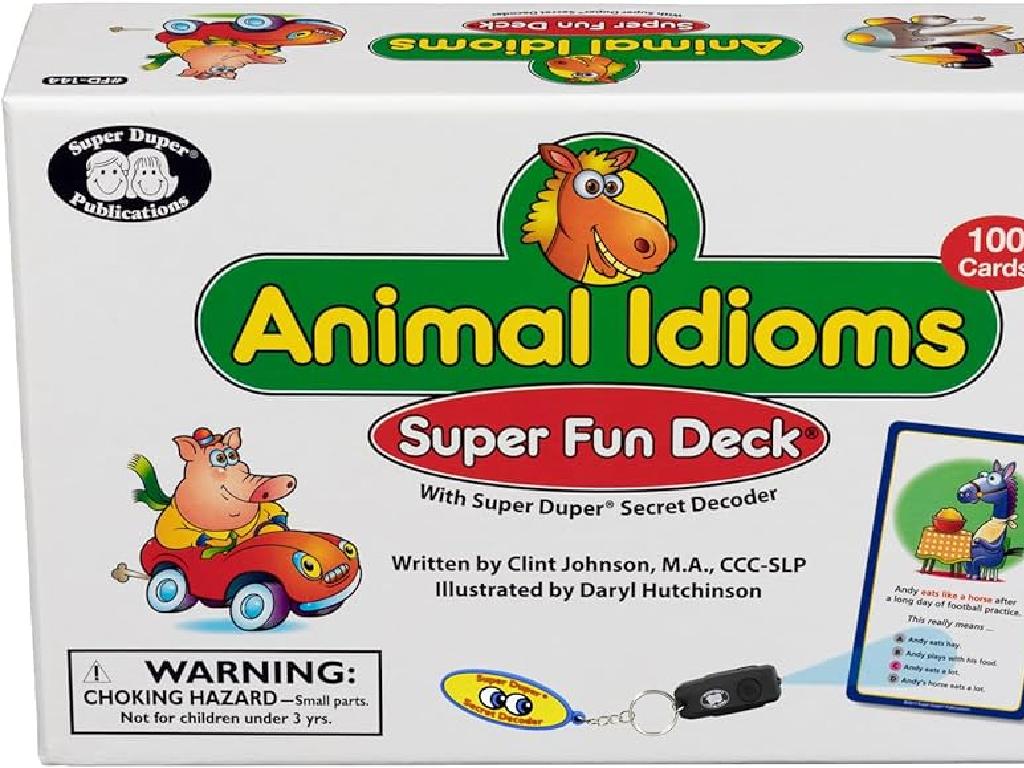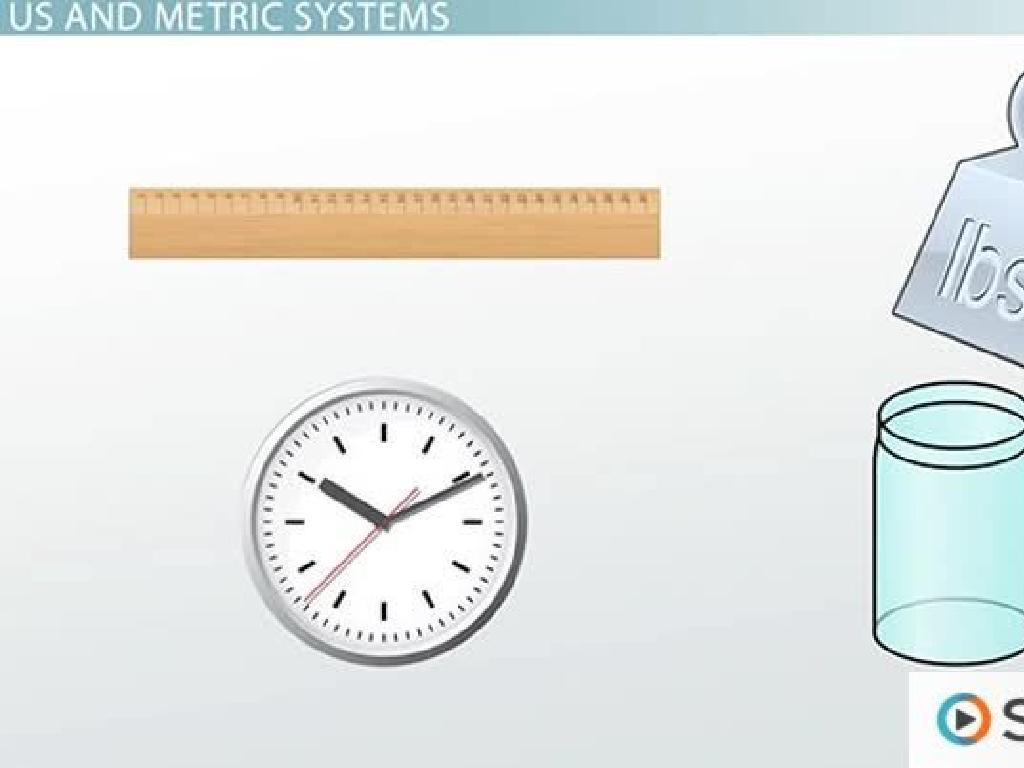Read Sight Words Set 10: Away, Blue, Here, Us, Where
Subject: Language arts
Grade: Pre-k
Topic: Sight Words
Please LOG IN to download the presentation. Access is available to registered users only.
View More Content
Welcome to Sight Words!
– Discover ‘sight words’
– Sight words are common
– Words we often see in books and stories
– Recognize without sounding out
– Like knowing a friend, you know them instantly!
– Today’s words: away, blue, here, us, where
– Practice these words to read faster!
|
This slide introduces the concept of sight words to Pre-K students, emphasizing the importance of recognizing these words by sight to improve reading fluency. Sight words are common in texts and can often be difficult to sound out, so learning them by sight is essential. Today’s focus is on the words: away, blue, here, us, and where. Engage the students with each word by showing them in different contexts, using them in sentences, and perhaps incorporating fun activities like word hunts or matching games. Encourage the children to spot these words in their favorite stories or during read-aloud sessions.
Meet Our Sight Words
– Our new word friends
– away, blue, here, us, where
– Practice saying them aloud
– Let’s say: away, blue, here, us, where together!
– Sight words boost reading skills
– Recognizing these helps us read quicker
– They improve our comprehension
– Understanding stories gets easier
|
This slide introduces five new sight words to the Pre-k class, aiming to expand their vocabulary and improve reading fluency. Sight words are common words that children are encouraged to recognize without sounding out. The words ‘away,’ ‘blue,’ ‘here,’ ‘us,’ and ‘where’ are not only frequently found in texts but also aid in the comprehension of sentences and stories. During the presentation, encourage the children to repeat the words after you to help with memorization. Incorporate fun activities like word matching games or flashcards to make the learning process interactive. Assess the children’s ability to recognize these words in different contexts and provide positive reinforcement to boost their confidence.
Learning Sight Words: ‘Away’
– ‘Away’ means to go elsewhere
– When someone or something leaves a place
– Example: Bird flew away from tree
– ‘The bird flew away from the tree’ shows the bird moving to another place
– Think of things that go ‘away’
– Maybe a pet runs away or a car drives away
|
The word ‘away’ is a common sight word that indicates movement from one place to another. Use the example of a bird flying away from a tree to illustrate this concept. Ask the students to think of other examples of things that go ‘away’ to help them understand the usage of the word. This could include a friend walking away to their home after playtime or a balloon floating away into the sky. Encourage the children to come up with their own examples and share them with the class. This activity will help solidify their understanding of the word ‘away’ and how it’s used in everyday language.
Sight Word: Blue
– ‘Blue’ is a color word
– Example: Sunny sky is blue
– Like the sky or ocean on a clear day
– Find blue things around us
– Look for blue objects in the classroom or at home
– Share what blue items you see!
– We’ll discuss as a class what blue items we found
|
This slide introduces the sight word ‘blue’ to Pre-K students, emphasizing its association with the color. Start by explaining that ‘blue’ is a word we use to describe the color of things like the sky and the ocean. Encourage the children to look around their environment for blue objects, which will help them remember the word through association. This activity not only reinforces the sight word but also enhances observational skills. During the next class, have a discussion where each student shares what blue items they found, fostering a collaborative and interactive learning experience.
Sight Word: ‘Here’
– ‘Here’ means in this place
– Example: ‘Come here to see the puppy’
– Use ‘here’ when talking about a location
– ‘Here’ is where you are now
– Like ‘here in our classroom’
– Practice using ‘here’ in sentences
|
The focus of this slide is to teach the sight word ‘here’ to Pre-k students. Start by explaining that ‘here’ is a word we use to describe being in the current location. Use a simple and relatable example, such as asking the children to come ‘here’ to see something interesting like a puppy, which they are likely to be excited about. Reinforce the concept by reminding them that they are ‘here’ in the classroom right now. Encourage the students to practice by using ‘here’ in different sentences and in response to questions about their location. This will help them understand the practical application of the word in everyday conversation.
Sight Word: ‘Us’
– ‘Us’ means together with others
– It’s like saying ‘you and me’ or ‘you and I’
– Example sentence using ‘us’
– ‘The teacher read a book to us.’ shows how ‘us’ is used to mean a group that includes yourself.
– Classroom activity with ‘us’
– We can stand in a circle and point to everyone saying ‘This is us!’ to understand the word better.
|
The slide focuses on the sight word ‘us,’ helping students understand its meaning and usage in context. Start by explaining that ‘us’ refers to a group that includes the speaker and at least one other person. Use the example sentence to illustrate this concept in a familiar setting, such as the classroom. For the activity, have the children form a circle and use the phrase ‘This is us!’ to reinforce the meaning of the word. This interactive approach helps students connect the word to a physical experience, enhancing their comprehension. Encourage the children to think of other situations where they could use the word ‘us’ and share with the class.
Learning Sight Words: ‘Where’
– ‘Where’ asks about a place
– Example: ‘Where is the teddy bear?’
– Use ‘where’ to find locations of objects
– Ask about places in our classroom
– ‘Where is the clock?’ or ‘Where are the crayons?’
– Practice using ‘where’ in sentences
|
The word ‘where’ is a sight word that helps us ask about locations. It’s important for students to recognize this word by sight to aid in their reading comprehension. Use the example ‘Where is the teddy bear?’ to show how ‘where’ is used in a question. Encourage students to think of items in the classroom and formulate questions using ‘where’. This activity will help them understand the concept of ‘where’ and how it’s used in everyday language. Have them practice by asking and answering ‘where’ questions with their classmates to reinforce the lesson.
Let’s Practice Reading Sight Words!
– Read a story together
– We’ll read a fun story in class
– Listen for sight words
– Focus on ‘away’, ‘blue’, ‘here’, ‘us’, ‘where’
– Raise your hand on hearing a word
– When you hear ‘away’, ‘blue’, ‘here’, ‘us’, ‘where’, let me know!
– Recognize ‘away’, ‘blue’, ‘here’, ‘us’, ‘where’
– These words help us read better!
|
This slide is for a class activity aimed at helping Pre-k students recognize and read sight words set 10: away, blue, here, us, where. The teacher will read a story aloud to the class, pausing slightly at each sight word to emphasize them. Students are encouraged to actively listen and raise their hand each time they hear one of the sight words. This interactive approach helps students associate the words with their sounds and meanings within the context of a story. The teacher should prepare a short and engaging story that includes these sight words multiple times. After the story, the teacher can ask the students to recall the sight words they heard and use them in their own sentences to reinforce learning.
Sight Word Hunt Activity
– Find sight words in a book
– Pair up with a buddy
– Spot ‘away’, ‘blue’, ‘here’, ‘us’, ‘where’
– Circle words on laminated page
– Use a dry-erase marker to circle
|
This slide introduces a classroom activity designed for Pre-K students to reinforce their recognition of sight words set 10: away, blue, here, us, where. The activity involves students working in pairs to find these sight words in a book, which encourages cooperative learning and peer assistance. Provide each pair with a laminated page from a book and a dry-erase marker so they can circle the words they find without damaging the book. This hands-on activity not only helps with word recognition but also enhances fine motor skills. Teachers should monitor the pairs, offer help as needed, and ensure that each student is engaged in the activity. After the hunt, discuss the words found and use them in sentences to further comprehension.
Sight Word Bingo Fun!
– Let’s play Sight Word Bingo!
– Cover the word when I call it out
– Use buttons or counters to cover words
– Shout ‘Bingo!’ when all words are covered
– Win a sticker for your achievement
– Show your Bingo card to the class
|
This slide introduces a fun and interactive class activity to help Pre-k students recognize and remember sight words. Prepare Bingo cards in advance with the sight words ‘away’, ‘blue’, ‘here’, ‘us’, ‘where’ randomly placed. Explain the rules clearly and demonstrate how to cover a word. As you call out each sight word, encourage students to find and cover the corresponding word on their Bingo card. Monitor the students to ensure they are correctly identifying the words. Celebrate each ‘Bingo!’ with the class and reward the winner with a sticker. This activity not only reinforces sight word recognition but also adds excitement to learning. After the game, discuss the sight words and use them in sentences to further enhance understanding.






